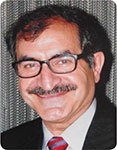An assessment of different model-management techniques in history-matching problems for reservoir modelling
Mohammad Sayyafzadeh A B and Manouchehr Haghighi A BA Australian School of Petroleum
B The University of Adelaide
The APPEA Journal 53(1) 391-406 https://doi.org/10.1071/AJ12035
Published: 2013
Abstract
History matching is a computationally expensive inverse problem. The computation costs are dominantly associated with the optimisation step. Fitness approximation (proxy-modelling) approaches are common methods for reducing computational costs where the time-consuming original fitness function is substituted with an undemanding function known as approximation function (proxy). Almost all of the applied fitness approximation methods in history-matching problems use a similar approach called uncontrolled fitness approximation. It has been corroborated that the uncontrolled fitness approximation approach may mislead the optimisation direction to a wrong optimum point. To prevent this error, it is endorsed that the original function should be utilised along with the approximation function during the optimisation process.
To make use of the original function efficiently, a model-management (evolution-control) technique should be applied. There are three different techniques: individual-based, population-based, and adaptive. By using each of these techniques, a controlled fitness approximation approach is assembled, which benefits from online learning. In the first two techniques, the number of original function evaluations in each evolution-control cycle is fixed and predefined, which may result in an inefficient model management. In the adaptive technique, the number is altered based on the fidelity of the approximation function. In this study, a specific adaptive technique is designed, based on heuristic fuzzy roles; then, for the first time, the applications of all the three techniques are investigated in history matching.
To deliver an assessment between the four approaches (the uncontrolled approach and three controlled approaches), a framework is developed in which ECLIPSE-E100 is coupled with MATLAB; and an artificial neural network, a genetic algorithm—with a customised crossover—and a Latin hypercube sampling strategy are used as the proxy model, optimiser, and experimental design method, respectively. History matching is carried out using each of the four approaches for the PUNQ-S3 reservoir model, while the same amount of computation time was allowed for each of the approaches. The outcomes demonstrate that the uncontrolled approach cannot deliver reliable results in comparison with the controlled approaches, and among the controlled approaches, the developed adaptive technique is more efficient.

Mohammad Sayyafzadeh is a final-year PhD candidate in petroleum engineering at The University of Adelaide. He studied chemical engineering at Tehran Polytechnic for his first academic degree, and graduated in 2007 in the top ten percentile. Mohammad continued his studies for a postgraduate degree in reservoir engineering at Tehran Polytechnic, and finished his master’s degree in 2010. At the same time, Mohammad worked as a reservoir engineer in the reservoir simulation and modelling research group of the University of Tehran; they successfully managed to get two significant research grants. In 2010, Mohammad received a full scholarship from The University of Adelaide and Santos for his PhD, to develop new techniques for reservoir modelling and history matching. Mohammad has published several journal and conference papers in different topics, including reservoir performance forecasting, history matching, production optimisation, and infill drilling. His research interests are reservoir modelling and simulation, geostatistics, Bayesian frameworks, uncertainty analysis, production optimisation, and inverse problem theory. Mohammad.Sayyafzadeh@adelaide.edu.au |

Dr Manouchehr Haghighi is a senior lecturer at the University of Adelaide’s Australian School of Petroleum. Manouchehr and his team are heavily involved in different research projects on both conventional and unconventional reservoirs. Before joining the University of Adelaide in 2009, Manouchehr was an associate professor of petroleum engineering at the University of Tehran, Iran. During 2000–2009, Manouchehr supervised more than 40 MSc and PhD students. From 1996–2000 Manouchehr was working with the National Iranian Oil Company (NIOC), and was the director of a program for training NIOC staff at several universities in the US, UK, Canada, France, and Norway. Manouchehr was a visiting professor at the University of Calgary from 2007–2008. Manouchehr has published numerous articles in peer-review journals and presented many papers at international conferences. He has also served as a reviewer for several journals and is a member of SPE. manouchehr.haghighi@adelaide.edu.au |


